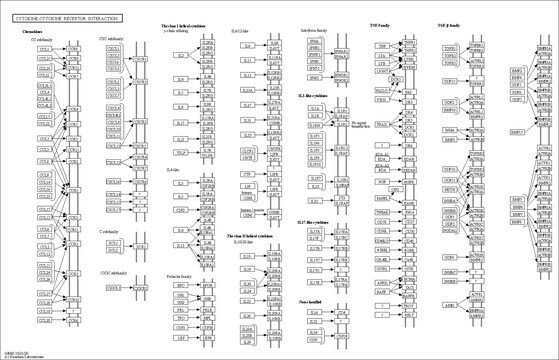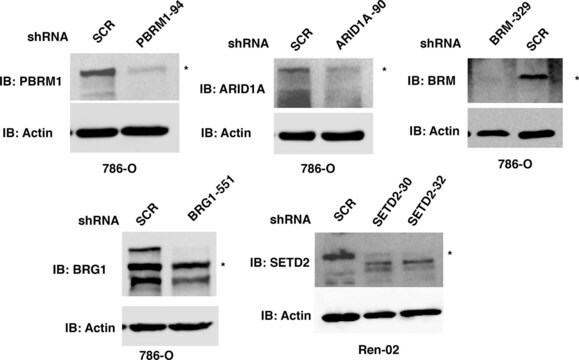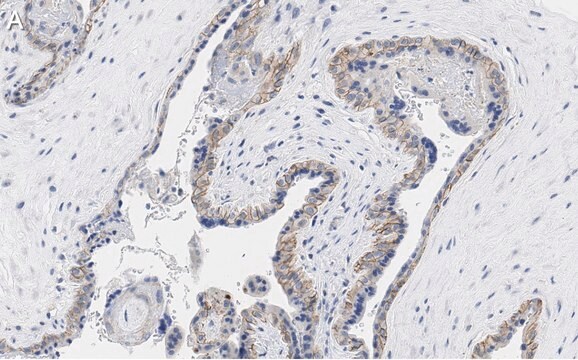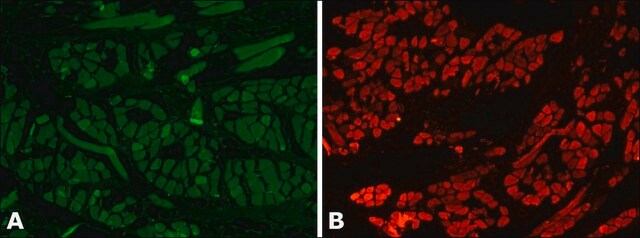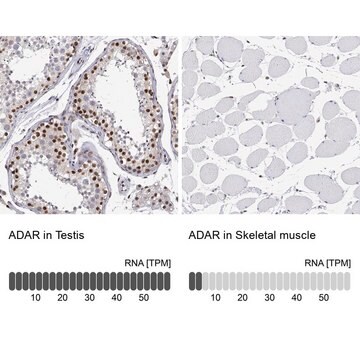04-080
Anti-BAF250a/ARID1a Antibody, clone PSG3
clone PSG3, Upstate®, from mouse
Synonim(y):
Anti-B120, Anti-BAF250, Anti-BAF250a, Anti-BM029, Anti-C1orf4, Anti-CSS2, Anti-ELD, Anti-MRD14, Anti-OSA1, Anti-P270, Anti-SMARCF1, Anti-hELD, Anti-hOSA1
About This Item
Polecane produkty
pochodzenie biologiczne
mouse
Poziom jakości
forma przeciwciała
purified immunoglobulin
rodzaj przeciwciała
primary antibodies
klon
PSG3, monoclonal
reaktywność gatunkowa
human
producent / nazwa handlowa
Upstate®
metody
immunofluorescence: suitable
western blot: suitable
izotyp
IgG
numer dostępu NCBI
numer dostępu UniProt
Warunki transportu
dry ice
docelowa modyfikacja potranslacyjna
unmodified
informacje o genach
human ... ARID1A (8289)
Specyficzność
Immunogen
Zastosowanie
Epigenetics & Nuclear Function
Chromatin Biology
Transcription Factors
Jakość
Opis wartości docelowych
Postać fizyczna
Przechowywanie i stabilność
Informacje prawne
Oświadczenie o zrzeczeniu się odpowiedzialności
Nie możesz znaleźć właściwego produktu?
Wypróbuj nasz Narzędzie selektora produktów.
polecane
Kod klasy składowania
10 - Combustible liquids
Klasa zagrożenia wodnego (WGK)
WGK 2
Temperatura zapłonu (°F)
Not applicable
Temperatura zapłonu (°C)
Not applicable
Certyfikaty analizy (CoA)
Poszukaj Certyfikaty analizy (CoA), wpisując numer partii/serii produktów. Numery serii i partii można znaleźć na etykiecie produktu po słowach „seria” lub „partia”.
Masz już ten produkt?
Dokumenty związane z niedawno zakupionymi produktami zostały zamieszczone w Bibliotece dokumentów.
Nasz zespół naukowców ma doświadczenie we wszystkich obszarach badań, w tym w naukach przyrodniczych, materiałoznawstwie, syntezie chemicznej, chromatografii, analityce i wielu innych dziedzinach.
Skontaktuj się z zespołem ds. pomocy technicznej